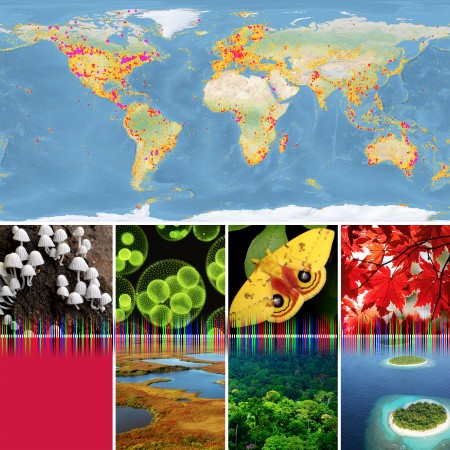Identifying species of all kinds is critical to human interactions with nature, and thanks to the innovative DNA barcoding system developed at the University of Guelph, this monumental task is becoming easier.
The work of barcoding species – how many exist, where they occur and how to tell them apart – is the theme of the most recent issue of the Philosophical Transactions of the Royal Society B, the world’s oldest scientific journal.
U of G professors Paul Hebert and Mehrdad Hajibabaei, along with Peter Hollingsworth, lead scientist at the Royal Botanic Garden in Edinburgh, Scotland, compiled and edited the issue. Entitled “From DNA barcodes to biomes”, the content is largely derived from presentations at the 6th International Barcode of Life Conference held on campus last August.
The publication reports the successes and future opportunities from the first decade of DNA barcoding.
“Although biologists have been naming species for 250 years, 90 per cent of all multicellular organisms await registration, suggesting that a complete consensus could require a millennium,” said Hebert, director of the Centre for Biodiversity Genomics at U of G. “DNA barcoding will not only allow a complete census of life in two or three decades, it will make it possible to track biodiversity changes with precision and will allow anyone to identify any organism on the spot.”
DNA barcodes are now available for more than 500,000 species and five million individuals throughout the plant, animal and fungal kingdoms.
They have been used to identify products in the marketplace, to combat mislabelled foods and medicines, while also providing environmental monitoring, diagnostics for water and soil quality, and a tool for measuring the environmental impacts of human activities.
In the insect world, automated clustering of DNA sequences can provide rapid, robust species counts, an approach that doubled the species count for Canada
DNA barcoding has produced novel insights into the diversity of marine species, from the tiniest plankton to the largest whales.
While discriminating species is difficult, DNA barcoding employs a standardized set of DNA regions to distinguish one species from another. It’s a cost-effective, automated approach that is already deployed on an industrial scale.
“How many species live in a gram of soil, a litre of seawater or a hectare of rainforest?” said Hajibabaei, Centre for Biodiversity Genomics and Department of Integrative Biology.
“How do these species interact and how are they impacted by climate change and various human activities? Answering these questions requires robust methods for species identification. DNA barcoding combines advances in evolutionary biology and genomics with informatics tools to empower global diversity analysis.”